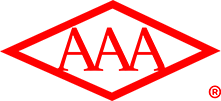Basic principle of cable drawing wire stretching
by:AAA
2020-02-26
1.
The stretching of the wire the stretching of the wire refers to a pressure processing method in which the wire blank is plastically deformed through the die hole under a certain pulling force, so that the cross section is reduced and the length is increased. 2. Characteristics of stretching (1)
The stretched wire has a more accurate size, the surface is smooth, and the section shape can be diverse. (2)Can stretch large length and various diameters of wire. (3)
Mainly cold processing, stretching process, mold, equipment is simple, high production efficiency. (4)
The tensile energy consumption is large and the deformation is limited to a certain extent. 3.
The principle of stretching, stretching belongs to the range of pressure processing, in the process of stretching, in addition to producing very little powder, the volume change is very small, so the volume of the metal before and after stretching is basically equal. 4. Factors affecting stretching (1)Copper, aluminum rod (Line)Material.
When other conditions are the same, the tensile force of drawing copper wire is larger than that of drawing aluminum wire, and the aluminum wire is easy to break, so a larger safety factor should be taken when drawing aluminum wire. (2)Tensile strength of materials.
The tensile strength of the material has many factors, such as the chemical composition of the material, calendering process, etc. High tensile strength is large tensile force. (3)Degree of deformation.
The greater the degree of deformation, the longer the length of the deformation section of the die hole, thus increasing the positive pressure of the die hole on the line, the friction force also increases, and the tensile force also increases. (4)Coefficient of friction between the wire and the die hole. The greater the friction coefficient, the greater the tensile force.
The friction coefficient is determined by the smoothness of wire and mold materials, the composition and quantity of lubricating fluid. (5)
The size and shape of the working area and sizing area of the wire die hole. The larger the sizing zone is, the greater the tensile force is. (6)The location of the line mold.
Incorrect placement of wire die or skewed die base will also increase tensile force. It is also that the wire diameter and surface quality are not up to standard. (7)External factors.
The wire is not straight, the jitter of The Wire in the process of pulling the wire, the pay-off resistance, will increase the tensile force.
Custom message

































































































